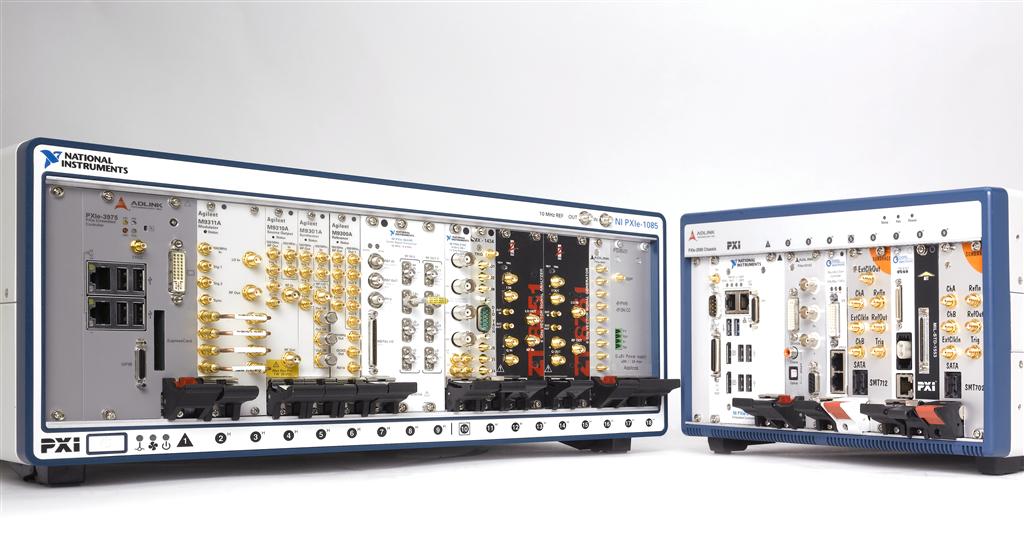Description
The National Instruments SMB-SMB Coaxial Cable is available in two part numbers: 188859-01, which measures 1 meter, and 763390-01, which is 0.3 meters long. This Coaxial Cable facilitates SMB to SMB connectivity and is specifically designed with a 50 Ohm impedance for compatibility with devices that have male RF SMB coaxial RF connectors.
Each cable is equipped with 1-Pin Female SMB connectors, ensuring a secure and reliable connection. The robustness of the cable is further enhanced by its high-quality, concentric shielding and the presence of dielectric insulation, which significantly reduce the risk of electromagnetic induction and allow for a reliable signal transmission.
With a low susceptibility to electromagnetic interference and capable of operating at frequencies up to 6 GHz, this cable is ideally suited for RF signal transmission. To maintain signal integrity, it is recommended to select a cable length that closely matches your specific requirements, avoiding any excess that could potentially degrade the signal quality.
| Attribute | Specification |
|---|---|
| Product Name | National Instruments SMB-SMB Coaxial Cable |
| Part Numbers | 188859-01 (1 m), 763390-01 (0.3 m) |
| Type | Coaxial Cable |
| Connectivity | SMB to SMB |
| Impedance | 50 Ohm |
| Connectors | 1-Pin Female SMB |
| Compatible Devices | Devices with male RF SMB coaxial RF connectors |
| Shielding | High-quality, concentric shielding |
| Dielectric Insulation | Yes |
| Electromagnetic Induction Resistance | Low |
| Maximum Operating Frequency | Up to 6 GHz |
| Recommended Usage | RF signal transmission; Avoid excess cable length |
Q1: What is the recommended practice for selecting the length of a National Instruments SMB-SMB Coaxial Cable to ensure optimal signal integrity?
A1: To ensure optimal signal integrity, it is recommended to select a National Instruments SMB-SMB Coaxial Cable length that closely matches the specific requirements of your setup, avoiding any excess length that could potentially degrade the signal quality.
Q2: What are the ideal applications for the National Instruments SMB-SMB Coaxial Cable given its specifications such as the 50 Ohm impedance, the capability to operate up to 6 GHz, and its high-quality shielding and dielectric insulation?
A2: The part numbers for the National Instruments SMB-SMB Coaxial Cable are 188859-01, which measures 1 meter, and 763390-01, which is 0.3 meters long, both designed with a 50 Ohm impedance and capable of operating at frequencies up to 6 GHz.
Q3: What are the part numbers and respective lengths of the two variations of the National Instruments SMB-SMB Coaxial Cable, and what is their impedance and maximum operating frequency?
A3: When selecting the length of a National Instruments SMB-SMB Coaxial Cable for an RF signal transmission application, it is important to choose a length that closely matches the specific requirements of your setup to avoid excess cable, which could degrade the signal quality, and to ensure compatibility with devices that require a 50 Ohm impedance and operate at frequencies up to 6 GHz.
Q4: What considerations should be taken into account when selecting the length of a National Instruments SMB-SMB Coaxial Cable to ensure signal integrity in an RF signal transmission application?
A4: The two available lengths and part numbers of the National Instruments SMB-SMB Coaxial Cable are 1 meter with part number 188859-01, and 0.3 meters with part number 763390-01, and they both have an operating frequency range of up to 6 GHz.
Q5: What are the two available lengths and part numbers of the National Instruments SMB-SMB Coaxial Cable, and what is their frequency operating range?
A5: The National Instruments SMB-SMB Coaxial Cable is ideally suited for applications that require reliable RF signal transmission, such as connecting RF equipment, testing and measurement devices, and communication systems, where 50 Ohm impedance matching, minimal electromagnetic interference, and operation at frequencies up to 6 GHz are critical for performance.




